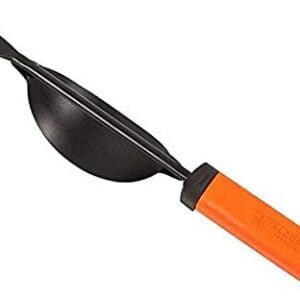No products in the cart.
Shopping cart (0)
Subtotal: ₹0.00
Spend ₹499.00 to get free shipping
Congratulations! You've got free shipping.
You may be interested in…
Sale
Khurpi- Iron&Steel Khurpi
Sale
Sale
Aglonima Plant
Categories: Air purifying plant, Indoor plant, PLANTS, SHOW PLANT
Tags: Aglonima, air purifying., beginner-friendly, colorful foliage, indoor plant, low-maintenance
Share:
Please, activate Compare option to use this widget.
₹438.75 Original price was: ₹438.75.₹367.75Current price is: ₹367.75.
🔥 3 items sold in last 3 days
Aglonima – a colorful, low-maintenance indoor plant with air-purifying properties.
Estimated delivery:December 16, 2025
Buy more save more!
Buy 3 items and get 5% OFF
on each productBuy from 5 to 4 items and get 10% OFF
on each productBuy 10 items and get 15% OFF
on each productYou may be interested in…
Sale
Khurpi- Iron&Steel Khurpi
Sale
Sale
Why choose kisan nursery & Garden store ?
Recently viewed items:
Glossy Kulhar Round Shape White Ceramic Pot
FALCON HAND WEEDER FW-9000
 Aglonima is a popular indoor plant known for its colorful foliage and air-purifying properties. It requires minimal care and can thrive in low light conditions, making it a perfect choice for beginners.
Aglonima is a popular indoor plant known for its colorful foliage and air-purifying properties. It requires minimal care and can thrive in low light conditions, making it a perfect choice for beginners.
Aglaonema, commonly known as Chinese evergreen, is a popular indoor plant prized for its attractive foliage and low-maintenance care requirements. Here are some details about Aglaonema along with frequently asked questions:
Description:
- Aglaonema is native to tropical and subtropical regions of Asia and New Guinea.
- It belongs to the Araceae family and is characterized by its lush, glossy leaves that come in various shades of green, silver, pink, and red, depending on the cultivar.
- This plant typically grows upright and can reach heights of 1 to 3 feet indoors, making it suitable for tabletops or floor displays.
- It is valued not only for its ornamental foliage but also for its air-purifying qualities.
Care Tips:
- Light: Aglaonema prefers bright, indirect light but can tolerate lower light conditions. Avoid direct sunlight, as it can scorch the leaves.
- Watering: Allow the top inch of soil to dry out between waterings. Overwatering can lead to root rot, so it’s essential to let the soil dry slightly before watering again.
- Humidity: While Aglaonema can tolerate average humidity levels, it appreciates higher humidity. Regular misting or placing a humidifier nearby can help maintain adequate moisture levels.
- Temperature: It thrives in temperatures between 65°F to 80°F (18°C to 27°C) and is sensitive to cold drafts.
- Soil: Use well-draining potting mix rich in organic matter. A mixture of peat moss, perlite, and compost works well.
- Fertilization: Feed with a balanced, water-soluble fertilizer every 4-6 weeks during the growing season (spring and summer).
Common FAQs:
- Why are the leaves of my Aglaonema turning yellow?
- Yellowing leaves can indicate overwatering, underwatering, or exposure to cold drafts. Check the soil moisture levels and adjust watering accordingly. Ensure the plant is not placed near drafts or air conditioning vents.
- Can Aglaonema tolerate low light conditions?
- Yes, Aglaonema is known for its ability to thrive in low to moderate light conditions. However, it may exhibit slower growth and less vibrant foliage compared to plants grown in brighter light.
- How often should I repot my Aglaonema?
- Repotting is typically necessary every 1-2 years or when the plant outgrows its container. Choose a pot only slightly larger than the current one to prevent overpotting.
- Are Aglaonema plants toxic to pets?
- Yes, Aglaonema contains compounds that can be toxic to pets if ingested. It’s best to keep it out of reach of cats, dogs, and other pets to prevent accidental ingestion.
- How can I propagate Aglaonema?
- Aglaonema can be propagated through stem cuttings or division. Stem cuttings can be rooted in water or directly planted in a potting mix, while division involves separating the plant into smaller sections with roots and replanting them in separate containers.
Be the first to review “Aglonima Plant” Cancel reply
Related products
Sale
Jade Plant
Rated 5.00 out of 5
Sale
Sale
Air purifying plant, GIFT PLANTS, Indoor plant, PANTS BY FEATURE, PLANT BY LOACATION, PLANTS BY TYPE, SHOW PLANT, TOP PLANTS, PLANTS
Boston Fern
Sale
Sale
Air purifying plant, FLOWERING PLANTS, GIFT PLANTS, Indoor plant, Low light Plants, SHOW PLANT, TOP PLANTS, PLANTS
Arthurium Red Plant
Free Shipping
Home Decoration
Free Shipping apply to all orders over ₹499
Guaranteed Replacments if damaged.
Secure and recyable packaging














Reviews
There are no reviews yet.